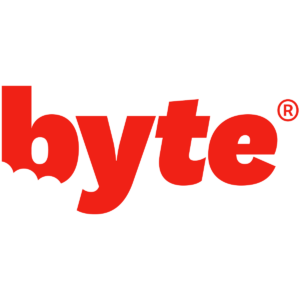Are you thinking of upgrading your smile? When it comes to getting invisible braces, a lot of people are setting their eyes on Invisalign aligners.
They look better than traditional metal braces and aside from the discretion, these aligners are removable so you can take them off any time. No need to worry about food restrictions or talking in front of a crowd! Clear aligners are also pain-free, unlike conventional braces!
As the leading brand in the market, Invisalign has undoubtedly a good reputation, high-quality service, and a roster of celebrities who can vouch for its effectiveness.
However, it also can not be denied that all the best products in the market come with a whopping price tag. So, what is the total cost for Invisalign, and how much is Invisalign a month?
If you are planning to get a better smile by straightening your teeth with Invisalign aligners, here are some of the things that you should know regarding Invisalign costs.
Price estimate
When you check out their website, Invisalign will not give you a solid number on how much you will be paying. This is because the amount you pay for treatment will depend on how much work your teeth will be needing. Basically, the more work your teeth need, the more expensive Invisalign treatment will be.
If you are looking for a specific price range for how much does Invisalign cost, Invisalign can cost anywhere between $3000 and $7000. This is the general Invisalign cost without insurance. Everyone’s dental needs are different so there is a chance that you may be paying lower or higher than that price range too.
On the Invisalign website, they give hypothetical examples of what monthly payments could look like. There is a $50 per month for 36 months, $200 for 24 months, and $125 per month for 24 months.
The only solid way to get a quote is to see an Invisalign provider for a consultation. When you pay for an Invisalign treatment, you are paying not only for the invisible aligners but also for the required dental office visits, professional fees, and any additional procedures such as x-rays.
Basically, the pricing concept for Invisalign aligners is similar to traditional metal braces. Again, the total Invisalign cost you will be paying will depend on a lot of factors.
Factors that affect Invisalign cost
As mentioned earlier, Invisalign costs depend on so many factors. Here are four of the major factors that have to be considered when it comes to your total cost for Invisalign.
Complexity of orthodontic treatment
Most clear aligners are designed for mild to moderate misalignment issues. But since Invisalign is an in-office treatment where you are monitored closely by a dentist, Invisalign can handle slightly severe cases of teeth and jaw misalignments.
As mentioned earlier, the more work your teeth need, the higher the price will be. This is because you will be having a longer treatment time and would be needing more clear aligner trays.
Of course, Invisalign also has its limits. If you have an extremely complex case, your dentist will probably suggest that you go for traditional braces instead. Also, you need to have good oral health to qualify for clear aligners. If you have tooth decay, you will be asked to deal with it first before getting Invisalign.
Refinements and extra support
There is a possibility that your treatment plan is not working. This usually happens if the patient does not wear the aligners for the required minimum number of hours per day.
There are also situations when you might need something more than just the clear aligners like attachments to give the aligners more force to move your teeth.
All these tweaking and refinements will also mean additional costs, making your Invisalign cost higher.
Invisalign providers
Invisalign awards point to all the dental professionals in their network. As a dentist completes more treatment, they advance to a higher tier. Those who are in the highest tier can have significant discounts on Invisalign lab fees. The discount can be passed to their patients. On the other hand, those who are in the higher tier may also charge more because of their expertise.
It is important to shop around your area first before you settle on an Invisalign provider. Some may offer you discounts while some won’t. You can always give dental offices a phone call and ask if there are any discounts or promos for Invisalign treatment if you do not want to do an official consultation just yet.
Location
Your location also matters when it comes to the cost of Invisalign. Just like other products and services, the area’s cost of living also determines their rates. Urban and suburban areas will have a higher Invisalign cost and dental treatment cost compared to rural areas.
The United States, New York, and California are some of the states that have the highest Invisalign costs. The southern states and rural Midwestern states have the lowest Invisalign treatment costs.
Will dental insurance cover Invisalign treatment?
If your dental insurance covers metal braces, then it can cover the cost of Invisalign.
But how much your insurance will pay will depend on your insurance provider and what kind of dental insurance plan you have. Some insurance plans will pay only up to a certain amount while some will cover as much as 50% of the total cost of Invisalign. But often, there is a lifetime cap on the amount insurance will pay under orthodontic treatment.
The only way to be sure that you will be covered is to give your insurance provider a call and ask them about the coverage cost of Invisalign. Also, take the chance to get a list of Invisalign providers that are in network with your insurance company.
There will be some insurance plans that do not cover braces or clear aligners. These insurance companies consider dental alignment therapy as a cosmetic treatment. They will only consider coverage if you are able to present proof that it is a medical necessity.
If you do not have coverage, you can always choose to purchase orthodontic coverage as an add-on to your current insurance plan. If there is none, you can always get coverage from another insurance provider.
Ways to pay for Invisalign treatment
There are still some ways to make your total Invisalign cost more affordable aside from your dental insurance coverage. Here is a list of some options you may want to check out to lower your total treatment cost:
Health savings account (HSA)
Health savings accounts can be used to pay for Invisalign. This is an account that is meant for people who have a high-deductible insurance plan. You can use this to help cover the cost of medical, dental, and orthodontic treatment. Take note that there are certain IRS eligibility requirements when it comes to opening health savings accounts.
Flexible savings account (FSA)
Flexible spending accounts This is an account that is managed by your employer. Throughout the year, a part of your paycheck is deducted to be placed into your FSA account. You can then use the money to pay for medical, dental, and orthodontic treatments. Take note though that not all employers offer a flexible spending account so better check if you have one first.
Third-party credit companies
You can also get a loan from third-party credit companies. These finance providers will offer to pay for your Invisalign clear aligners in the meantime and you will be paying them monthly. Invisalign works with LendingPoint in particular. But you can also find some other lending or credit companies that can cover Invisalign treatment for you. Take note that a down payment may be required for this as well.
Other Invisalign alternatives
If you think Invisalign clear aligners cost too much and that it is not a good fit for your current budget, do not worry! You can still upgrade your smile without using metal braces! You can turn to home aligners as an Invisalign alternative!
These brands are significantly cheaper than Invisalign because there are no dental office visits and professional fees involved! Treatment is done remotely! These home aligners also give you the flexibility to choose between night and day aligners or do an upfront payment or a monthly installment.
Here is a list of home aligners that you should check out and how much they cost to give you a comparison:
Candid
- Upfront payment = $2400
- Monthly installment = $99
Byte
- Upfront payment = $1895 (day aligners); $2295 (night aligners)
- Monthly installment = $83 (day aligners); $99 ($499 night aligners)
SmileDirectClub
- Upfront payment = $1950 (day and night aligners)
- Monthly installment = $89
AlignerCo
- Upfront payment = $1145
- Monthly installment = $86
NewSmile
- Upfront payment = $1195
- Monthly installment = $84
Take note that a down payment may be required for monthly installments. Also, some of these brands may do a credit check to clear you for monthly payments.
Last thoughts
Invisalign treatment is no doubt, one of the best ways to get straighter teeth. However, there is no denying that it does cost significantly more than other clear aligners available in the market right now. Invisalign can also cost more than traditional braces!
Paying for the Invisalign cost without insurance may be financially difficult for some people. If budget is a big deal for you, here is our suggestion:
If you only have a mild dental issue to fix like misaligned teeth or crooked teeth, we would suggest you be more practical and go for home clear aligners. They can do the job effectively at more than half the cost of what the whole Invisalign system would cost. This can save you hundreds of dollars!
But if you have a more complex issue, you better stick with Invisalign. Complex cases need close monitoring. Working closely with a dental professional will greatly help in your treatment.



